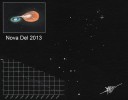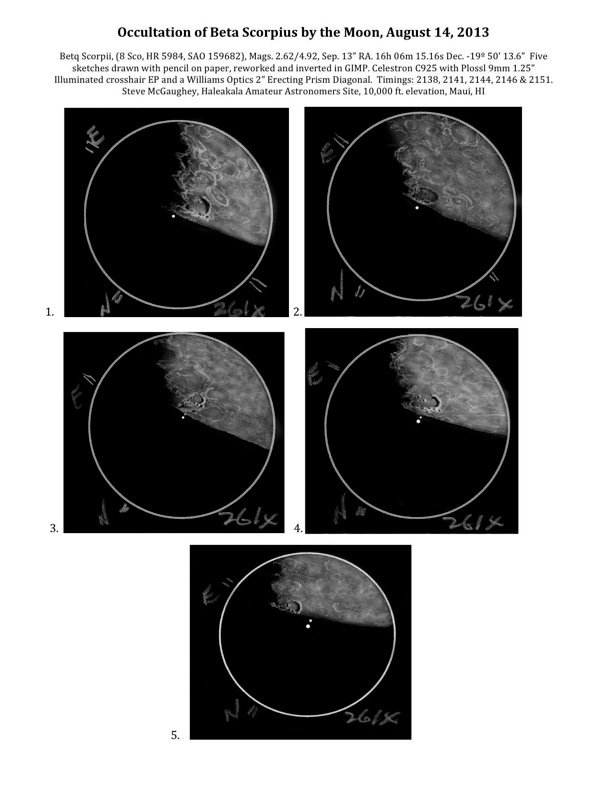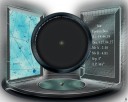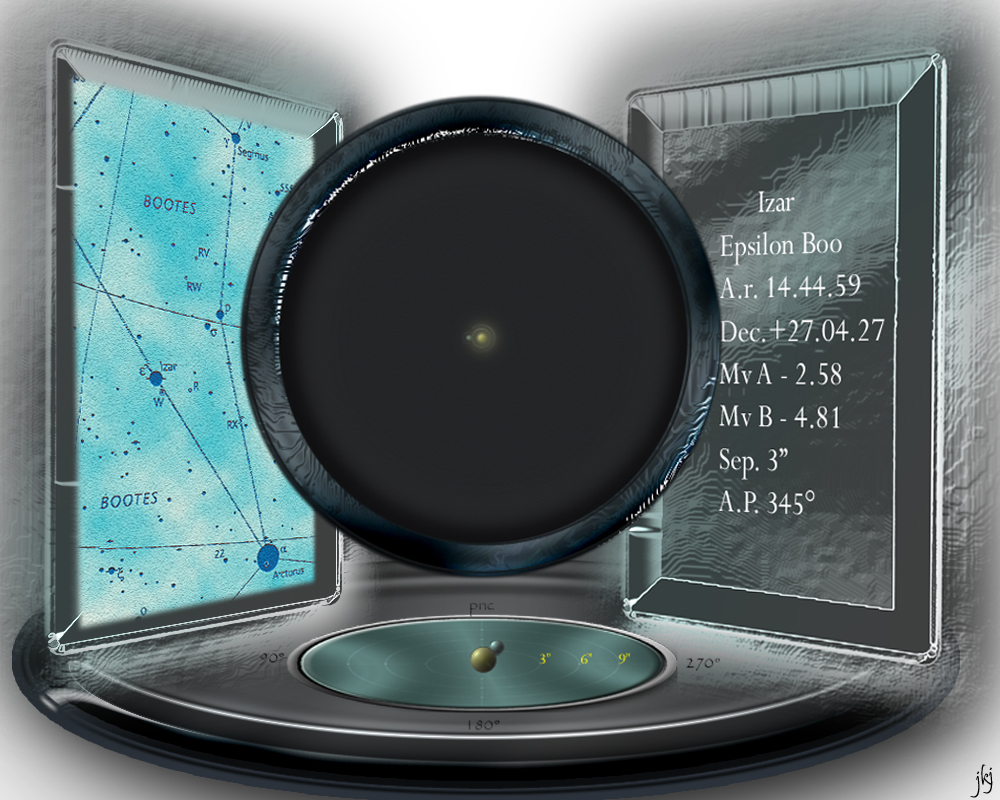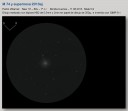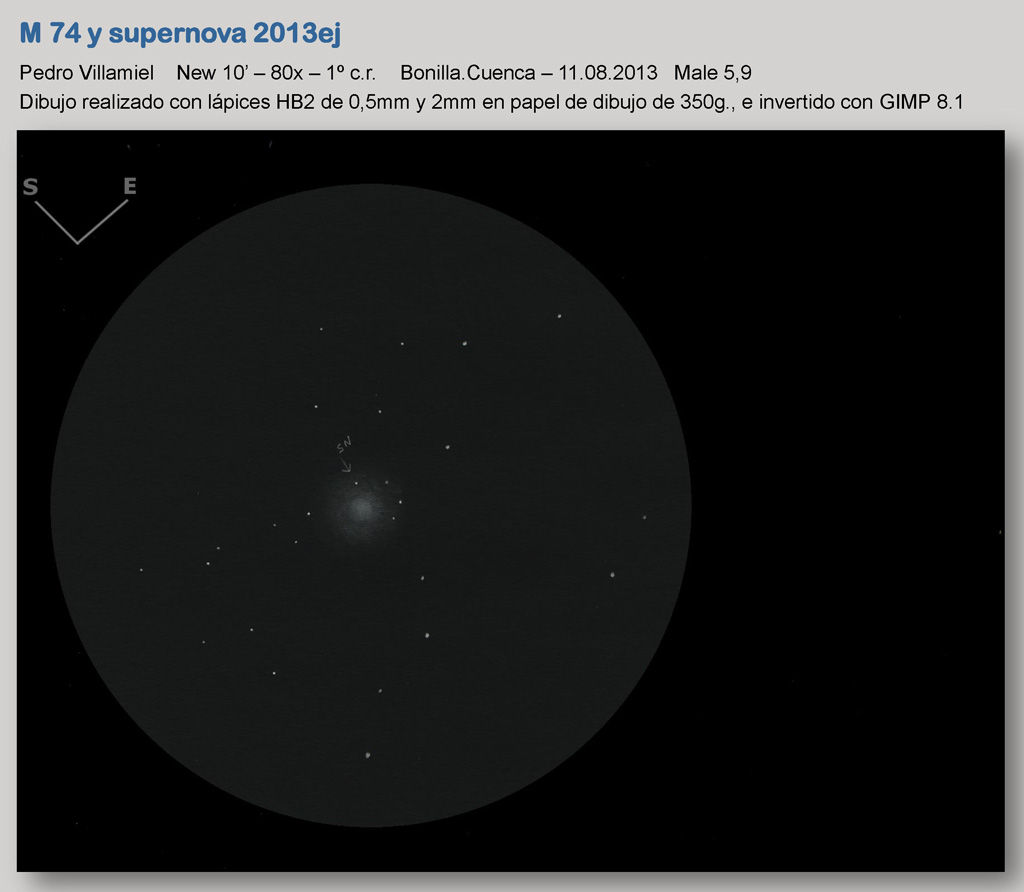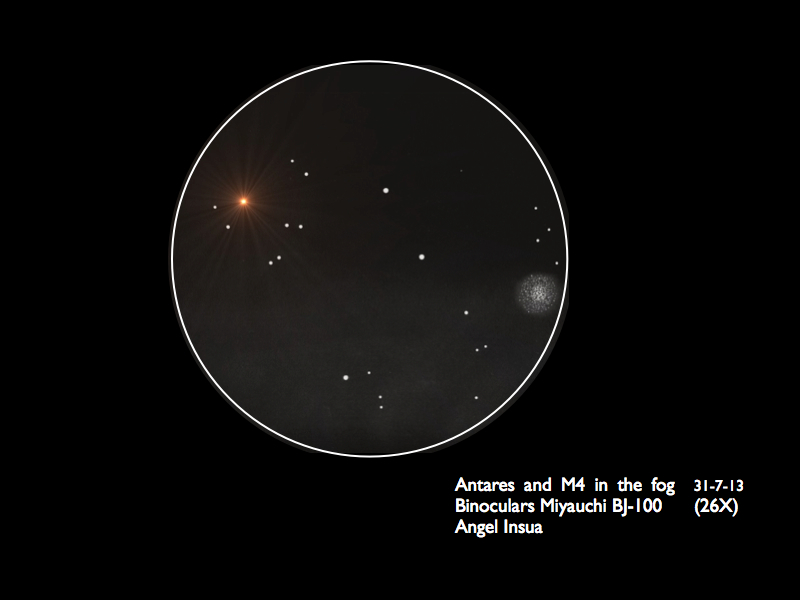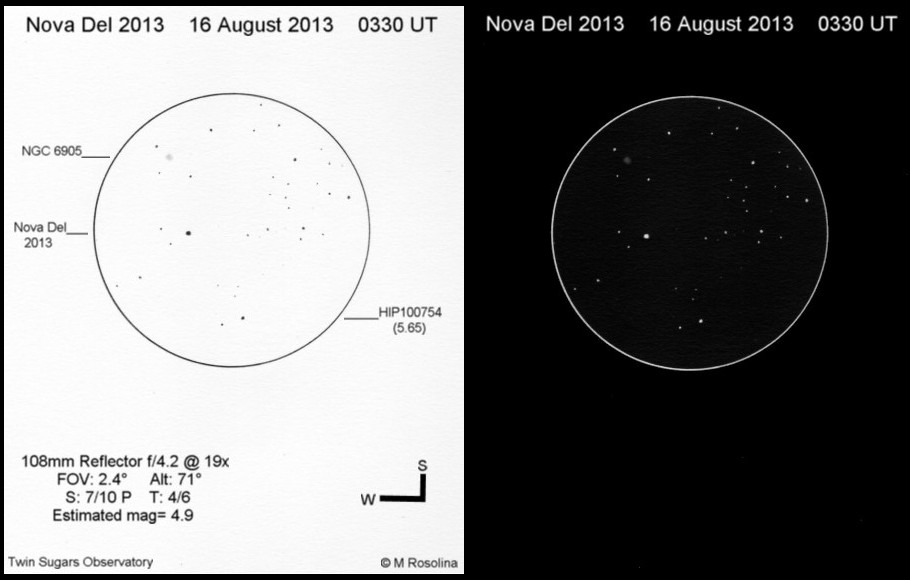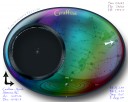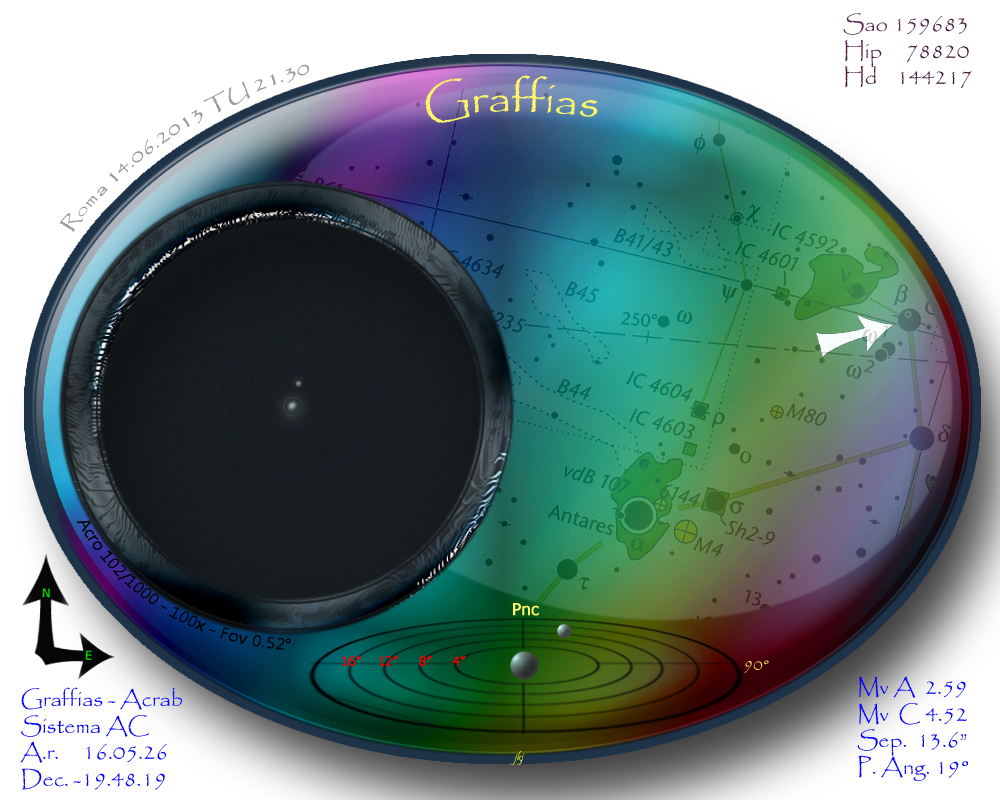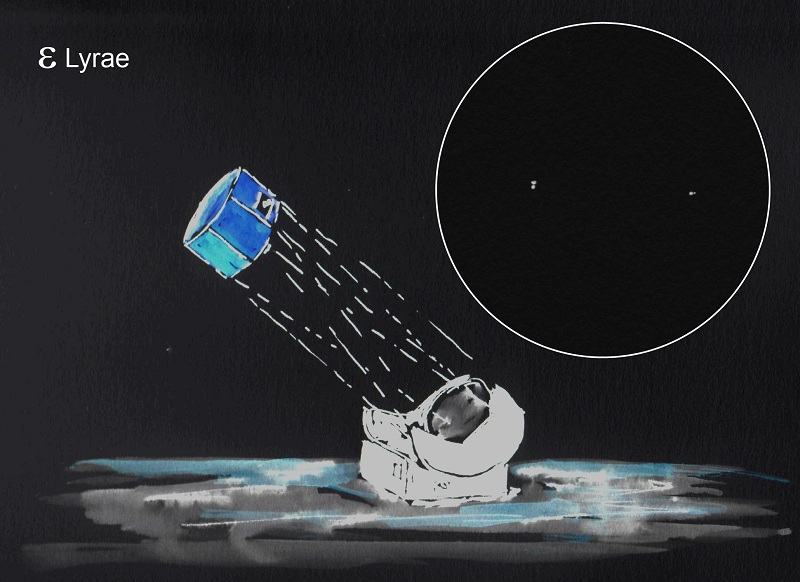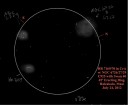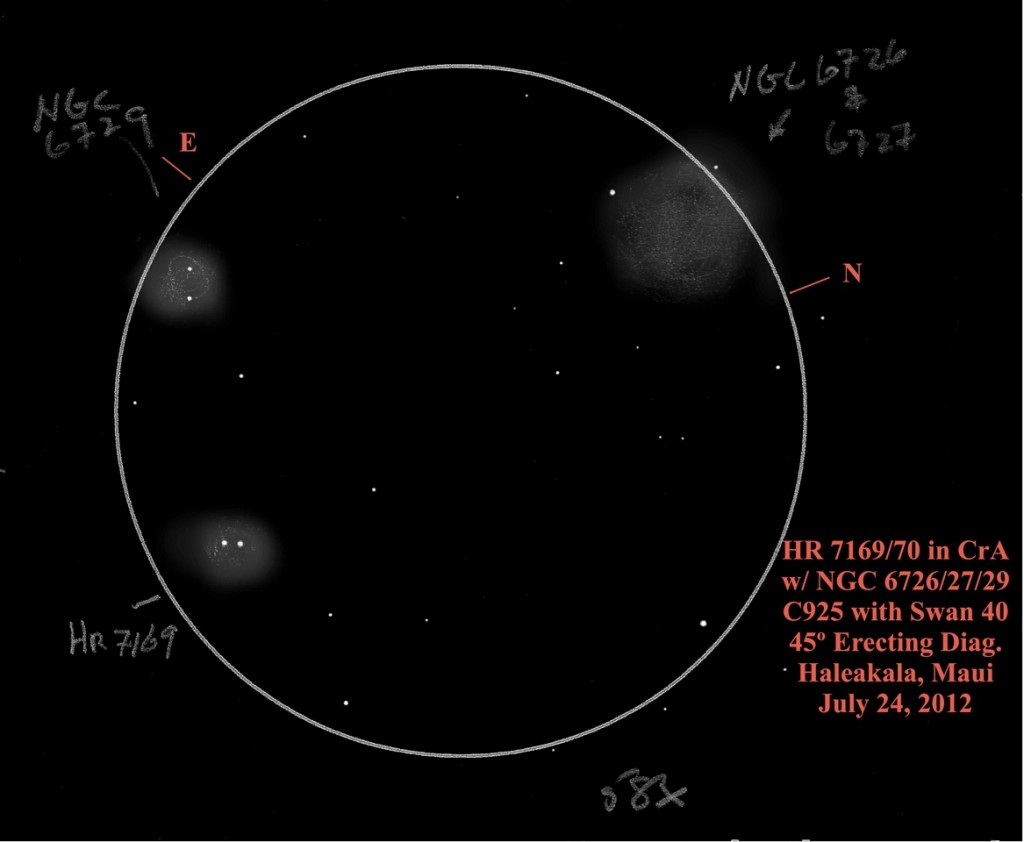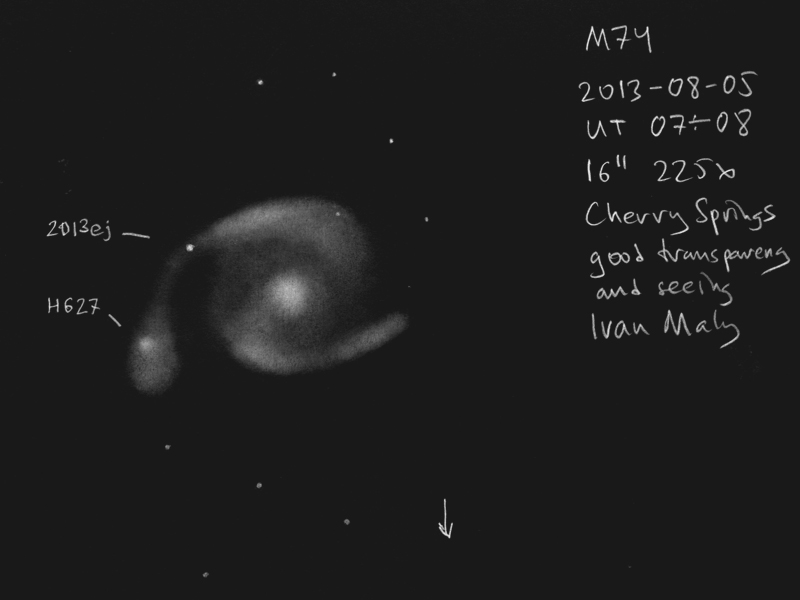
Object Name: M74 and SN2013ej
Object Type: galaxy and supernova
Location: Cherry Springs, Pennsylvania
Date: August 5, 2013
Media: graphite pencil, white paper, digitally inverted and scaled
Notes: 16″ Newtonian, 225x. Observed UT 2013-08-05 06:30-08:20. 10 deg. C, 75% humidity. Exceptional transparency, good seeing. Most of the night the transparency was variable, but it became exceptionally good (at least for summer) one hour before astronomical twilight. As M74 was then reaching respectable altitude, it erupted with detail. The very compact HII region Hodge 627 was seen intermittently within the star cloud at the end of the southern arm. Although the exaggerates this brightness difference, supernova 2013ej was indeed brighter than the surrounding Milky Way stars.

